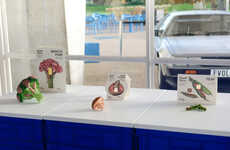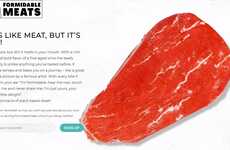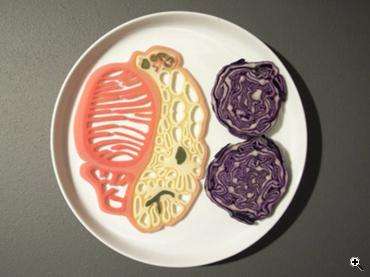
Semi-Living Food
Alex Covert — March 20, 2008 — Lifestyle
References: tca.uwa.edu.au & tfot.info
This may look like a preschooler's art project but, it is in fact a hunk of meat. Well, not meat exactly but, not... not meat, either. Scientists in Australia have created a 'semi-living' food. This project uses a tissue engineering technique to grow cells from living animals into bodyless animal parts. I can't see vegetarians or meat-eaters wanting to chow down on this non-animal entree.
Implications - The idea of creating this type of meat came about as a way to develop meat without actually having to hurt and kill an animal. Although creating the meat was successful, the Australian scientists still need to figure out a way to make the meal look more presentable.
Implications - The idea of creating this type of meat came about as a way to develop meat without actually having to hurt and kill an animal. Although creating the meat was successful, the Australian scientists still need to figure out a way to make the meal look more presentable.
Trend Themes
1. Lab-grown Meat - The development of lab-grown meat using tissue engineering techniques presents an opportunity for sustainable and ethical meat production.
2. Alternative Protein Sources - The production of semi-living food as an alternative protein source could disrupt the traditional meat industry and create new markets for plant-based products.
3. Food Aesthetics - Improving the appearance of semi-living food could lead to innovations in food presentation and packaging, as well as new opportunities for food design and artistry.
Industry Implications
1. Agriculture - The development of lab-grown meat and alternative protein sources has the potential to transform and disrupt the traditional agriculture industry.
2. Food Manufacturing - Semi-living food production and improved food aesthetics could create new opportunities and innovations in the food manufacturing industry.
3. Biotechnology - Tissue engineering techniques used in the development of semi-living food could lead to new disruptions and innovations in the biotechnology industry.
2.4
Score
Popularity
Activity
Freshness























